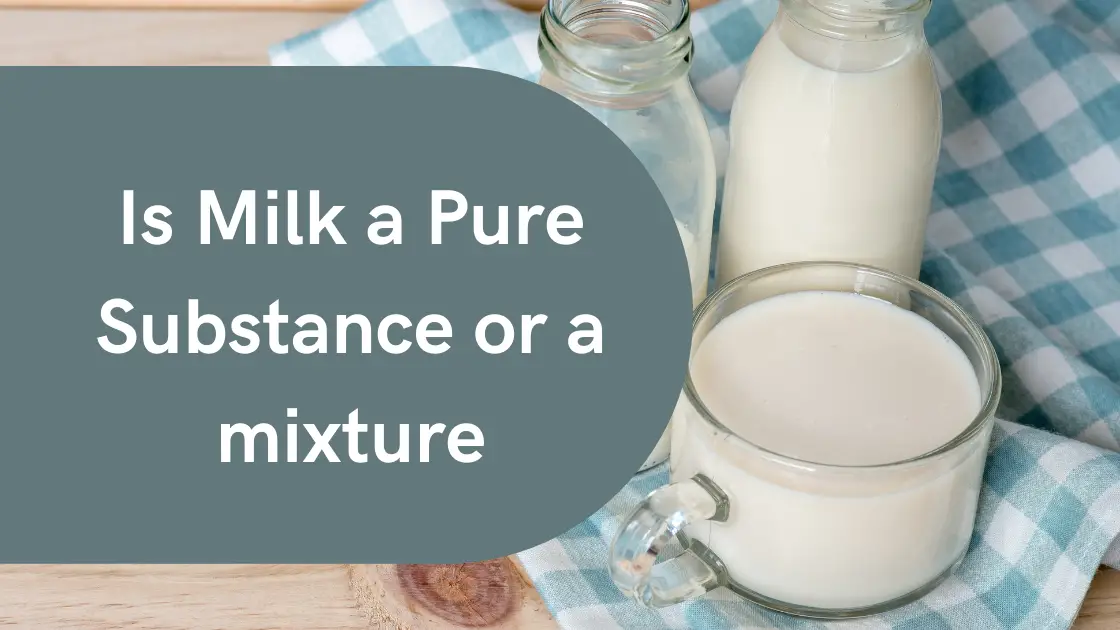We all are familiar with milk. While studying pure substances and mixtures there comes a question Is Milk A Pure Substance or a Mixture? Well, this article is all about explaining why milk is regarded as a mixture, not as a pure substance.
TLDR;
Lactose and casein are found in milk. It’s a colloidal solution. Milk is a mixture of water, fat, solids, and proteins, hence it is not a pure substance but a mixture.

Let us first understand the basic vocabulary involved in our explanation before proceeding with the explanation of our question.
What is milk?
Milk is a nutrient-rich liquid food produced by the mammary glands of mammals.
What is a pure substance?
A pure substance is made up of one kind of particle with constant structure, these structures are further divided into elements and compounds. The pure substance contains only one kind of matter. It has a definite set of properties such as boiling point, melting point, and density.
What is a mixture?
When two or more pure substances are combined it forms a mixture. Here they are not combined chemically. Mixtures can be separated into components of pure substance. Mixtures can be classified on the basis of particle size into three different types: solutions, suspensions, and colloids.
Types of mixtures: –
Solutions- It is a homogeneous mixture consisting of two or more components in which the particle size is smaller than 1 nm. Eg sugar in water.
Suspensions- It is a heterogeneous mixture in which the solid particles are spread throughout the liquid without dissolving in it.
Colloids- It is a mixture where one of the substances is split into very minute particles which are dispersed throughout a second substance.
Why is milk a mixture?
As we now know the definitions of a pure substance and a mixture, it is easier to describe whether milk is a pure substance or a mixture. We can see that milk is regarded as a mixture and not a pure substance, it is a heterogeneous mixture because of its colloidal nature.
Milk contains water, fat, solid, and proteins thus it is not a pure substance. The main compounds of milk are lactose and casein.
Frequently Asked Questions
Milk isn’t a compound or element. Milk contains water, fat, solid, proteins etc. Milk doesn’t have a set composition ratio, hence it’s a combination. Since there are many different types of milk available, there is no single compositional ratio for milk, hence it is undoubtedly a mixture.
Milk is a colloid, meaning that it contains microscopic bits of fat floating throughout the liquid. Colloids do not often divide into their constituents over time.
Milk is a mixture, not a pure substance. Pure substances are elements or compounds. Milk is mostly water, lactose, fat, solid, and protein. As a result, it is a combination.
Milk is a homogenous mixture because it has a uniform composition throughout and does not separate when left on its own.
